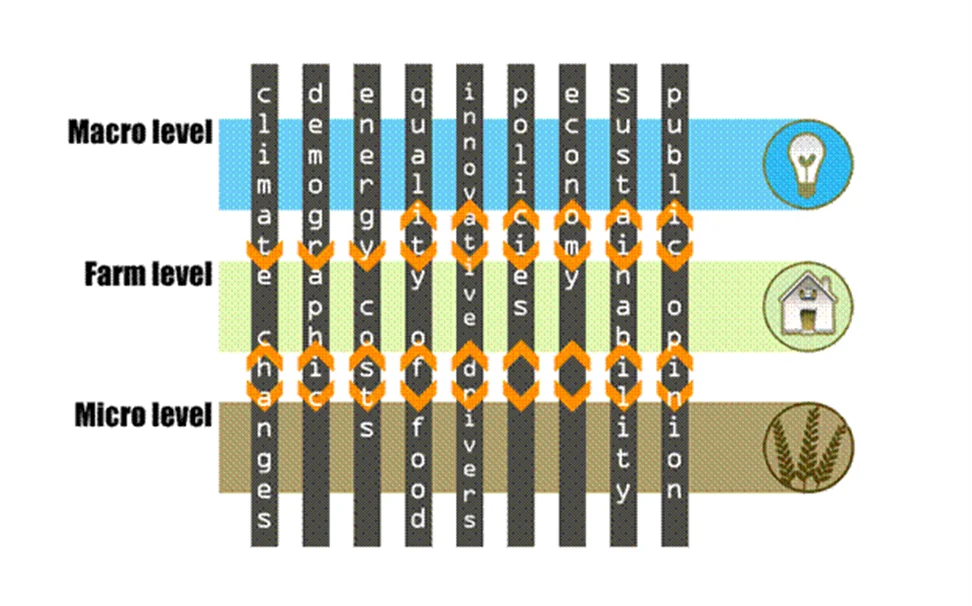Levels of knowledge management in agriculture

Reading time
Content
In today's dynamic agricultural industry, effective management of information and knowledge at different levels is crucial to ensure sustainability and economic efficiency.
This process involves understanding and integrating data from different sources and converting it into actionable information and knowledge that farmers can use to make informed decisions.The division of information management into three basic levels - macro, farm and micro - allows for better structuring and processing of information.

Macro level
At the macro level, farmers need to navigate a wide range of external information that can have a direct impact on their business.
This includes:
- Market trends: Understanding global and local trends in prices, demand and supply.
- Subsidy programmes: Information on national and international support programmes that can financially support farmers.
- Weather forecasts: Key data for planting, harvesting and risk management decisions.
- Global dynamics: Implications of international events and policies on agricultural markets.
- Traceability systems: Systems to ensure transparency of the origin and path of products from farm to final consumer.
Farm level
This level focuses on the internal aspects of a farm, such as:
- Economic models: The use of financial and economic models to manage resources effectively.
- Crop planning: Deciding which crops to grow based on market signals and agronomic conditions.
- Decision support systems: Tools and software that help in operational and strategic decision making.
Micro level
At the micro level, the focus is on specific operations on the farm, including:
- Precision agriculture: The use of technology to increase efficiency and reduce waste, such as automated tractors or precision pesticide application systems.
- Data collection: Collecting and analysing data from field sensors, drones and other devices.
Robotics
Deploying robotic systems for planting, harvesting or processing crops.

Interoperability as a critical aspect
To manage this information efficiently and minimize manual processing and errors, interoperability - the ability of different information systems and software applications to communicate and exchange data effectively - is essential. Interoperability enables:
- Systems integration: bringing together different information systems for easy data access and analysis.
- Process automation: reducing manual work and increasing the accuracy and efficiency of data processing.
- Better decision making: Faster and more informed decisions through access to comprehensive and integrated data.
Effective information and knowledge management at all levels of the farm is essential to adapt to changing market conditions and global challenges such as climate change and food security. Interoperability of systems is key to achieving this efficiency and must be included in any plan for the future development of the agricultural sector.
